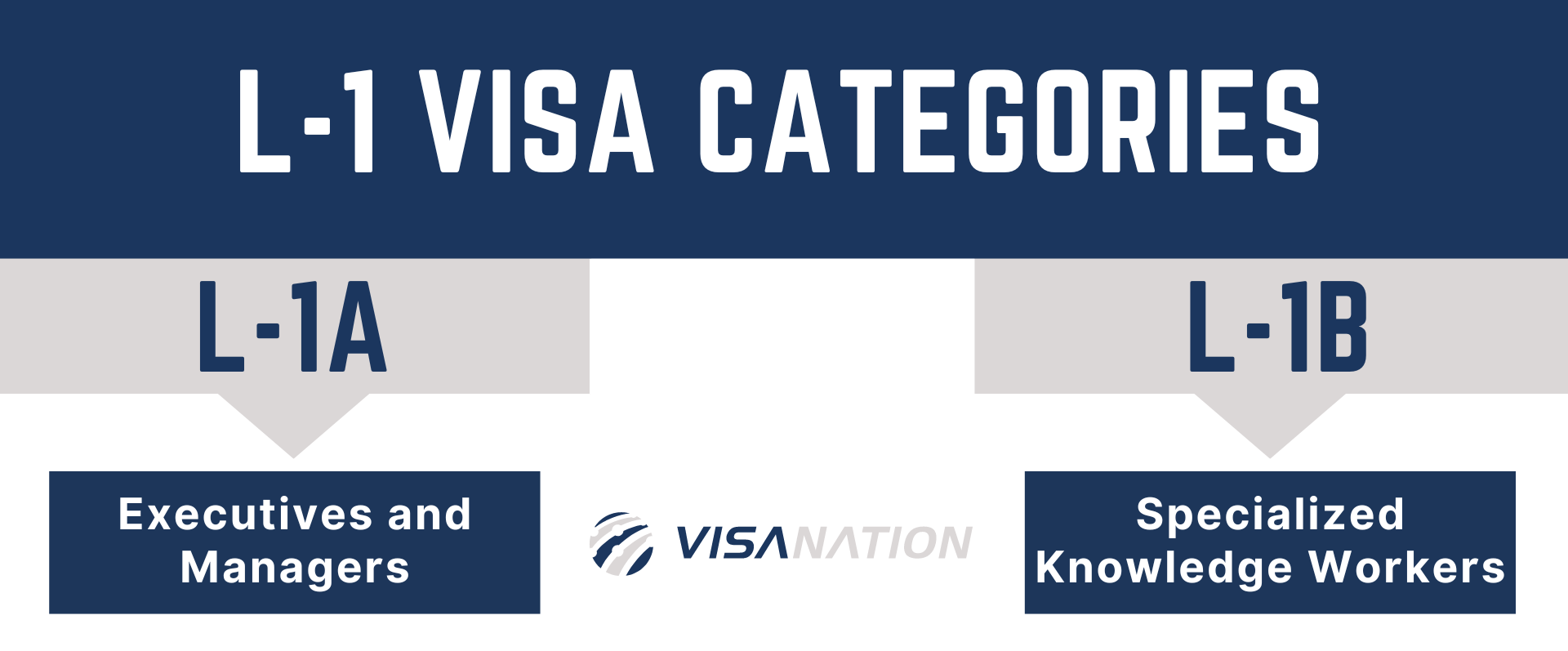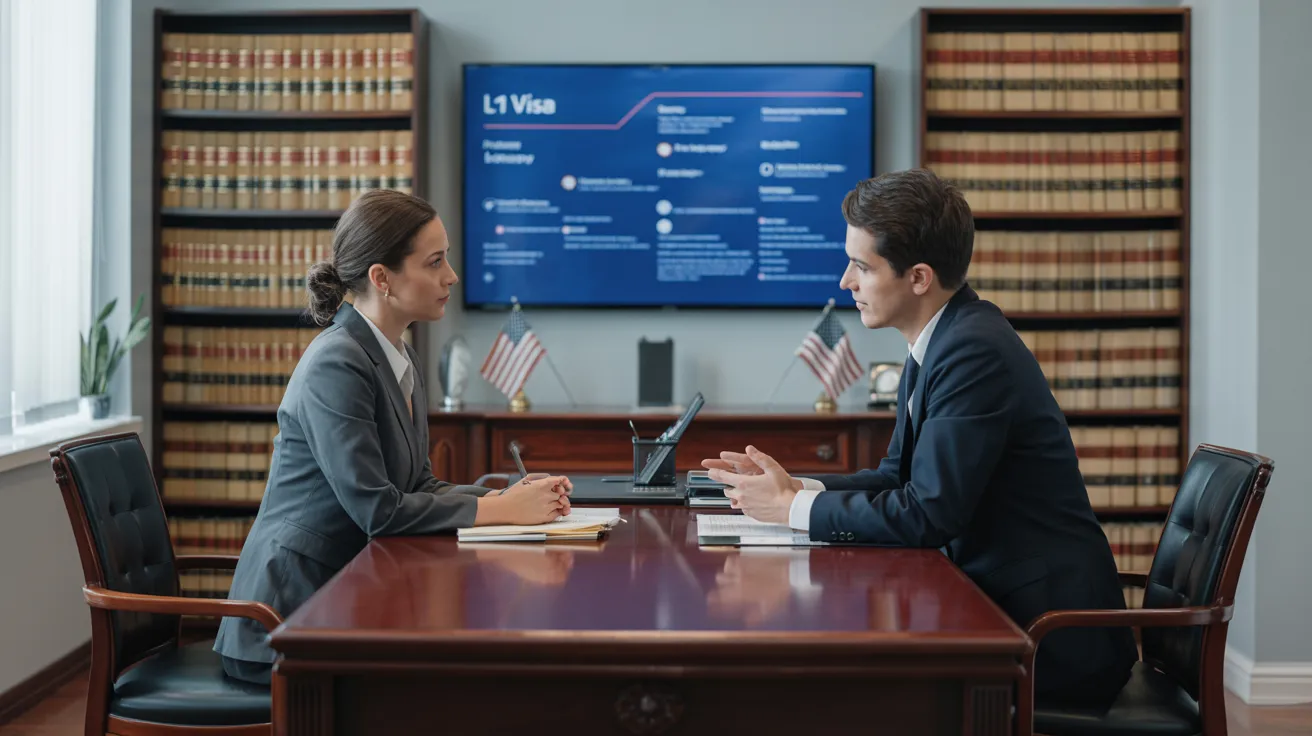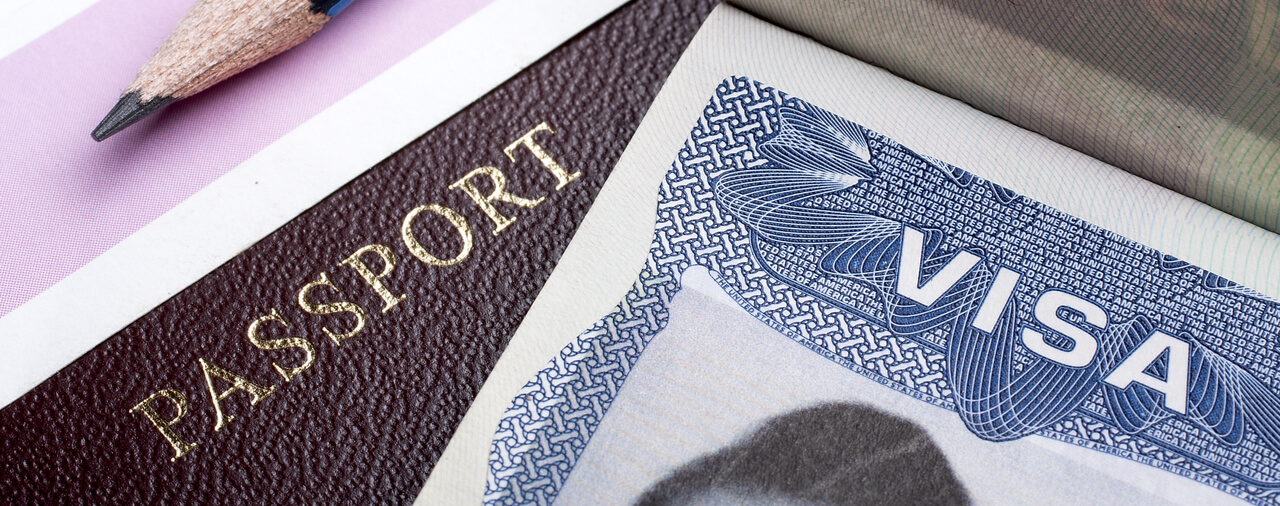Opening Opportunities: A Comprehensive Guide to the L1 Visa Process
The L1 visa process presents an essential pathway for multinational business seeking to transfer key workers across borders. Comprehending the nuances of eligibility standards, the differences in between L-1A and L-1B visas, and the complexities of the application process can substantially affect an applicant's success. Nevertheless, steering this facility landscape is not without its difficulties, and cautious interest to documents and employer sponsorship is necessary. As we discover the crucial components of this process, the methods for getting over potential challenges will end up being evident, disclosing just how educated preparation can open a world of possibilities.
Comprehending the L1 Visa
Understanding the L1 visa involves recognizing its importance as an essential device for multinational firms seeking to transfer experienced staff members in between worldwide workplaces. This non-immigrant visa category assists in the motion of execs, supervisors, and specialized expertise employees to the USA, thus enabling companies to preserve functional continuity and harness global talent efficiently. The L1 visa is separated right into two key categories: L-1A for managers and execs, and L-1B for staff members possessing specialized knowledge.The L1 visa serves a vital function in improving a company's affordable side in the international marketplace - L1 Visa. By permitting firms to move their key workers, services can guarantee that important tasks are managed by certified people that are already accustomed to the business's culture and operational processes. This internal transfer system not only promotes expertise sharing however also advertises development and partnership across borders.Moreover, the L1 visa is usually preferred for its relatively simple application procedure contrasted to other visa classifications, as it allows for double intent, allowing holders to pursue long-term residency while on a short-term copyright. This function makes the L1 visa especially appealing for both companies and workers, as it streamlines the path for competent professionals to develop lasting residency in the United States
Qualification Requirements
Qualification for the L1 visa depends upon several vital requirements that ensure both the employee and the company meet details credentials. This non-immigrant visa is created for international companies to move workers from international offices to united state counterparts.Firstly, the company has to be a certifying organization, which consists of a moms and dad business, branch, associate, or subsidiary of a united state service. The firm should have been doing company for a minimum of one year both in the U.S. and abroad. This ensures that the business has adequate operational stability and a genuine presence.Secondly, the employee should hold a supervisory, executive, or specialized knowledge placement. For L1A visas, the candidate has to demonstrate supervisory or executive certifications, while L1B visas concentrate on specialized understanding pertaining to the company's items, services, or processes. In addition, the worker needs to have functioned for the foreign entity for at least one continuous year within the last 3 years before their application.Lastly, the staff member's function in the U.S. should line up with their previous placement, making sure that their abilities and know-how are leveraged for the company's benefit.
Sorts Of L1 Visas
The L1 visa group comprises 2 main types made to facilitate the transfer of workers within multinational firms: the L1A visa for supervisors and execs, and the L1B visa for employees with specialized understanding. Each type serves unique objectives and has certain qualification criteria.The L1A visa is tailored for people who hold managerial or executive positions within a company. This visa allows top-level staff members to transfer to an U.S. branch, subsidiary, or affiliate of the same company. Candidates for the L1A visa must demonstrate that they have actually been employed in a managerial or executive capacity for at the very least one constant year within the past three years prior to their application. Furthermore, this visa provides a much longer duration of remain, originally approved for three years, with the possibility of extensions for as much as seven years.In comparison, the L1B visa is meant for professionals with specialized expertise associated to the business's products, services, or procedures. To certify, candidates need to confirm that their knowledge is important to the company and that they have functioned for a minimum of one constant year within the last three years in a duty that needed this specialized knowledge. The L1B visa is initially approved for three years, with extensions readily available for as much as five years.Both visa kinds are important for business looking for to improve their worldwide procedures by leveraging proficient employees, therefore advertising development and performance within the U.S. market.
Application Process
Guiding through the L1 copyright procedure involves several crucial steps that need to be carefully followed to guarantee a successful outcome. The process starts with the united state company, who have to initially establish qualification by showing a qualifying connection with the international entity and confirming that the worker fulfills the specific demands for the L1 visa group being sought.Once eligibility is validated, the company launches the procedure by submitting Form I-129, the Application for a Nonimmigrant Employee, with the United State Citizenship and Migration Services (USCIS) This type must be come with by a comprehensive summary of the work tasks to be executed, the organizational framework of both the U.S. and foreign entities, and the worker's certifications. It's crucial to verify that all info is accurate and full, as omissions or mistakes can bring about hold-ups or denials.Upon authorization of the I-129 request, the next action entails the worker looking for the L1 visa at a united state consular office or consular office in their home country. This stage requires the conclusion of Kind DS-160, the Online Nonimmigrant copyright, and arranging an interview. Throughout the interview, the applicant should provide evidence supporting their credentials and the employer's petition.After the visa is provided, the worker can go into the United States to work in the marked duty. In general, careful preparation and adherence to each action of the application procedure are vital for an effective L1 visa end result.
Needed Documentation

Crucial Forms Required
Steering the L1 Visa procedure calls for cautious focus to the essential forms and documentation essential for an effective application. The key type required is the Type I-129, Request for a Nonimmigrant Worker, which must be completed and sent by the united state employer. This form describes the details of the work deal and the certifications of the staff member seeking the L1 Visa.Alongside Type I-129, the applicant will require to complete Kind I-539 if going along with relative are likewise getting visas. Additionally, the employer must give evidence of the certifying connection between the united state entity and the foreign entity, commonly demanding the submission of corporate files such as articles of unification or monetary statements.Moreover, it is essential to include the L Category Supplement to Type I-129, which defines the sort of L Visa being asked for-- either L-1A for supervisors and executives or L-1B for workers with specialized knowledge. Finally, applicants need to assure that all types are authorized and dated properly, as insufficient entries can lead to delays or rejections. Properly assembling these crucial forms lays the foundation for a smoother L1 copyright procedure.

Supporting Proof Demands
Supporting paperwork is necessary for a successful L1 copyright, as it corroborates the cases made in the petition. Candidates have to supply a range of files to show qualification for the visa, which is categorized right into 2 primary types: proof of the certifying relationship between the united state and foreign entities and proof of the candidate's qualifications.To develop the partnership, candidates need to submit paperwork such as business organizational charts, monetary statements, and evidence of possession. These files verify that the international firm has a qualifying relationship with the U.S. employer, whether as a parent firm, subsidiary, branch, or affiliate.For the candidate's credentials, vital L1 Visa files include a comprehensive employment letter from the foreign employer, describing the candidate's work title, duties, and duration of employment. Additionally, educational qualifications, such as degrees and diplomas, should be supplied to show the candidate's competence in the appropriate field.
Company Sponsorship Documents

Common Difficulties
Steering the L1 visa process offers several common difficulties that candidates should know. Key problems often include rigid paperwork needs, possible hold-ups in processing times, and the requirement for rigorous lawful conformity. Comprehending these challenges can help applicants much better prepare and reduce threats during their copyright journey.
Documentation Needs
The L1 copyright process typically offers considerable challenges connected to documentation demands. Candidates should give comprehensive documents to develop qualification, which can bring about complication and potential delays. Trick papers consist of proof of a qualifying partnership between the united state and international company, proof of the applicant's employment background, and comprehensive info concerning the task function in the U.S.One typical difficulty is collecting sufficient proof to demonstrate the nature of the qualifying connection. Firms commonly battle to existing clear business graphes or monetary statements that highlight the connection between the entities. In addition, making sure that letters of support from companies accurately reflect the applicant's task responsibilities and certifications is necessary, as vague descriptions can result in denials.Another problem emerges from the need for detailed job descriptions that straighten with the L1 visa groups. Candidates should articulate not just their existing role yet additionally their supervisory or specialized expertise responsibilities clearly. This necessitates a detailed understanding of both the candidate's setting and the regulative language used in L1 applications.
Processing Time Delays
Experiencing hold-ups in handling times is a common obstacle encountered by L1 visa candidates, usually leading to frustration and unpredictability. A number of variables contribute to these delays, including high application quantities, raised analysis of applications, and administrative backlogs within the united state Citizenship and Migration Provider (USCIS) Candidates may locate that handling times can vary significantly depending upon the solution center handling their application, as each center has its very own work and performance levels. Additionally, the intricacy of the applicant's case, such as the requirement for substantial paperwork or explanation, can further extend wait times.In some instances, concerns associated with the applicant's present immigration status or previous visa history may also bring about extra delays, as USCIS may need additional testimonial or details. It is necessary for candidates to remain proactive during this period, maintaining open interaction with their employers and legal representatives to attend to any type of potential problems promptly.Understanding these handling time challenges can assist L1 visa candidates prepare for possible hold-ups and alleviate the effect on their change and profession strategies. Patience and diligence are vital virtues in maneuvering this intricate procedure.
Legal Conformity Issues
Many L1 visa candidates come across lawful compliance concerns that can complicate their journey toward obtaining the visa. Understanding and adhering to the details laws established by the U.S. Citizenship and Immigration Provider (USCIS) is important. Common difficulties consist of demonstrating the qualifying relationship in between the foreign and U.S. companies, along with confirming that the applicant possesses the requisite specific knowledge or supervisory capacity.Additionally, applicants need to offer extensive documentation describing their job obligations, corporate framework, and economic stability of the U.S. entity. Inadequate or incorrect documentation can cause hold-ups or perhaps rejections. Companies must additionally assure that they comply with labor regulations, including wage and working problem requirements, which can impact visa eligibility.Another common concern involves maintaining compliance with the terms of the visa as soon as approved. Changes in employment condition, job obligations, or firm structure can require amendments to the visa, which otherwise resolved promptly can lead to legal complications. Consequently, staying notified concerning conformity needs and seeking legal advise when necessary is essential to navigate the complexities of the L1 visa procedure efficiently.
Tips for Success
Success in the L1 copyright process usually rests on meticulous prep work and interest to detail. To improve your possibilities of approval, start by thoroughly comprehending the qualification requirements for both the L1A and L1B visa categories. Evaluate whether your placement at the company qualifies as managerial, executive, or specialized knowledge, as this classification notably affects your application.Next, collect substantial paperwork that corroborates your cases. This includes organizational charts, detailed task summaries, and proof of the business's operational framework. Clear and concise evidence of the qualifying partnership in between the united state entity and the international entity is crucial. Verify that all documents are arranged logically and offered in a specialist fashion, as this shows your dedication and severity about the application.Engage the solutions of a knowledgeable immigration attorney that focuses on L1 visas. Their expertise can confirm indispensable, leading you with complex regulations and guaranteeing that all documents adheres to current regulations. In addition, plan for the interview by exercising responses to common inquiries and being prepared to review your role and payments to the firm in depth.
Regularly Asked Questions
Can Family Members Members Come With the L1 Visa Holder?
Yes, member of the family of L1 visa holders, including spouses and single children under 21, can go along with the primary visa holder. They may also use for L2 visas, which enable them to reside in the United States.
The Length Of Time Can I Remain on an L1 Visa?
The L1 visa allows preliminary remains of approximately three years, with the opportunity of extension. L1A visa owners might stay for an optimum of 7 years, while L1B visa holders can continue to be for 5 years.
Can L1 Visa Owners Make An Application For a Permit?
Yes, L1 visa holders can request a permit. L1 Visa Requirements. They may pursue long-term residency via employment-based classifications, usually calling for sponsorship from their company, offered they fulfill the needed qualifications and documentation demands
What Takes place if My L1 copyright Is Refuted?
If your L1 copyright is denied, you might receive a notice detailing the reasons for rejection. You can look for to appeal the choice, reapply, or explore different visa alternatives based upon your conditions.
Exist Any Type Of Travel Restrictions With an L1 Visa?
An L1 visa generally allows for global travel; nonetheless, re-entry to the united state is contingent upon maintaining valid status. Vacationers ought to guarantee conformity with visa conditions to avoid difficulties upon return
Verdict
